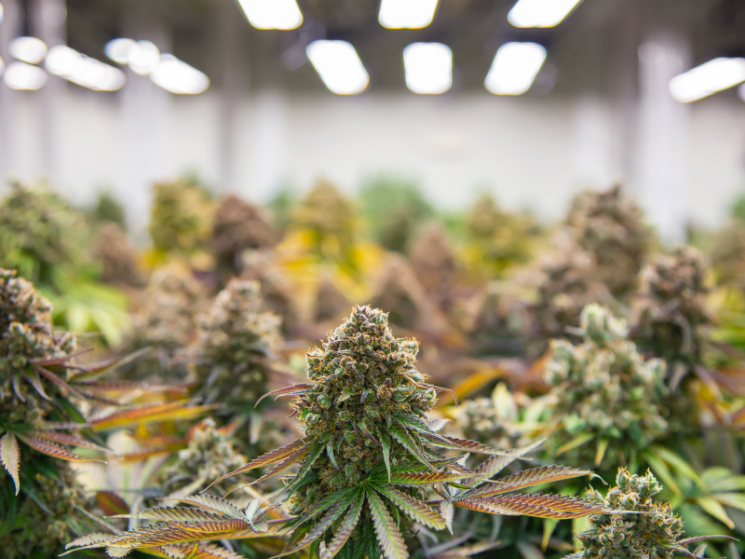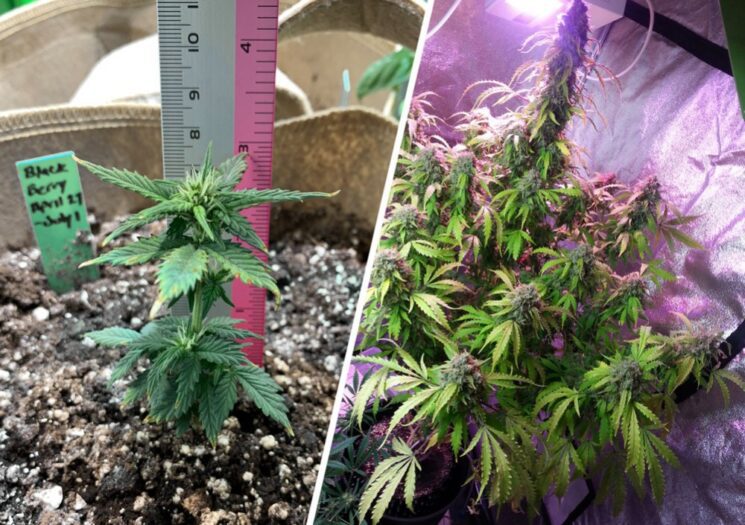Growing cannabis can be an exciting and rewarding experience, and if you’re looking to take your green thumb to the next level, autoflower cannabis is a great place to start. With our 2024 guide to growing autoflower cannabis, you’ll learn all the tips and tricks you need to make sure your plants reach their full potential. Let’s get started!
In This Post
Advantages and Disadvantages of Autoflower Cannabis

Autoflower cannabis strains allow growers to skip the process of having to worry about the number of daylight hours or the complexities of light schedules. By doing so, they typically require less attention, as they are meant to switch from vegetative growth to flowering based on age rather than photoperiod. This also frees up time for outdoor growers who have limited access to grow tents or other artificial lighting as they are much more weather resistant than other varieties. Furthermore, autoflowers have recently gained relevant cannabinoid content, in particular CBD with up to 19%. For those looking for a good autoflower cannabis strains, you can always check out the weed seeds USA from reputable seed banks.
While there are plenty of advantages with these plants, there are also some drawbacks that should be taken into account while planning a grow. They can be somewhat finicky and easily react negatively to external changes such as temperatures or lighting conditions – meaning timing is key if any type of success is desired from this strain. Additionally, yields can often be slightly lower compared with photoperiod counterparts – on average growers tend not to meet their expectations due to initial problems in adjusting optimal growing conditions for these kinds of plants. Lastly, it is important to consider that some genetic lines take longer than others so proper scheduling and budgeting should always be kept in mind when choosing a strain for growth.
Factors Affecting Autoflower Cannabis Growth

When growing cannabis, there are a number of important factors that affect whether or not the plant will actually produce a good harvest. These factors influence autoflower cannabis plants in particular and must be taken into account when attempting to successfully grow this type of strain.
Temperature is one of the main factors that will determine how well autoflower cannabis grows. A consistent temperature is essential for optimal growth, as too high or too low temperatures can negatively impact the rate at which your plants develop and their eventual yield. It’s especially important to pay attention to night temperatures during flowering, as some varieties may need slightly cooler nights than others.
Light exposure is also significant when cultivating these plants due to their largely photoperiod-dependent growth cycle (they require a set amount of time to light each day in order to flower). If you’re growing indoors, make sure you use an appropriate lighting setup with potentially supplemental lighting if it’s required for optimal growth and yields.
Lastly, soil fertility plays an important role in how well these strains develop throughout their life cycle – so make sure you’re providing them with nutrients that are specifically tailored towards their individual needs from start until finish! Organic compost additions mixed with store-bought fertilizer blends may help keep those beneficial microorganisms alive that provide structural integrity and nutrition for your plants so they can reach their maximum potential upon harvest!
Soil Requirements for Autoflower Cannabis
It is important to take into account the soil requirements for optimal performance. They require well-drained soil with the right PH level and the right nutrient balance.
Soil should be an appropriate mix of organic matter that contains adequate levels of all the essential nutrients needed for proper growth and development. They will perform best in an aerated soil rich in granular, organic matter such as composted manure, aged bark or aged peat moss. This allows for better oxygenation of the root system which is essential for efficient delivery of water and nutrients to the entire plant structure. It also helps stimulate microbial activity which contributes to healthier, more vigorous growth and a bigger yield.
The PH level should range between 6 and 7 depending on your chosen strain as different genetics may prefer different levels of acidity or alkalinity. Make sure to conduct regular soil tests to ensure that nutrient levels remain consistent throughout your grow cycle by adding amendments if necessary before water or applying fertilizer especially if you’re growing in containers where these might change faster than when growing outdoors or in raised beds with actual soil. Additionally, keep an eye out for signs of overfertilization such as brown spots on leaves as this can affect your final yield significantly.
Lighting Requirements for Autoflower Cannabis

While autoflowering cannabis plants are incredibly popular because of their easy growing process, proper lighting is still necessary in order to achieve a successful harvest. They require the same light cycle and intensity as regular, non-autoflowering cannabis plants.
When choosing a lighting system for your autoflower plants, consider the following factors:
- Light intensity: In order to maximize light penetration into the canopy, choose a lighting system that has full-spectrum capabilities with high ratings on PAR (Photosynthetically Active Radiation) output. Generally speaking, it is best to use higher wattages such as 1000 watt or greater while keeping your lights close enough to the tops of your plants so they can receive maximum light intensity during flowering.
- Light cycle length: Their genetics do not require a change in light schedule during their life cycle and should remain on an 18 – 24 hour cycle throughout their entire life cycle. However, be aware of any changes in PAR output within areas where lights are passing through glass or plastic materials including windows or greenhouses.
- Temperature control and ventilation: Keeping your autoflower room temperature cool is just as important as the number of hours you keep your lights on each day since autoflowers generate more intense heat while flowering under higher wattage bulbs. Installing fans or providing cross ventilation should help keep temperatures down while ensuring that CO2 levels remain high enough so that photosynthesis keeps ticking away like clockwork! Additionally, many think air cooled hoods are necessary to reflect all light evenly across plant canopy however this isn’t always true – especially when working in smaller grow tents/boxes with 4 foot by 4 foot coverage!
Conclusion
Growing autoflower cannabis in 2024 is not as hard as you may think. With the right set of instructions, you will be able to produce fine quality buds without any difficulty at all. All that you need are the right tools and some patience – and voila! You will have a perfect crop of high-yielding cannabis that can help improve your life in ways you never thought possible. Make sure to read our guide carefully so that you can achieve perfect results every time.